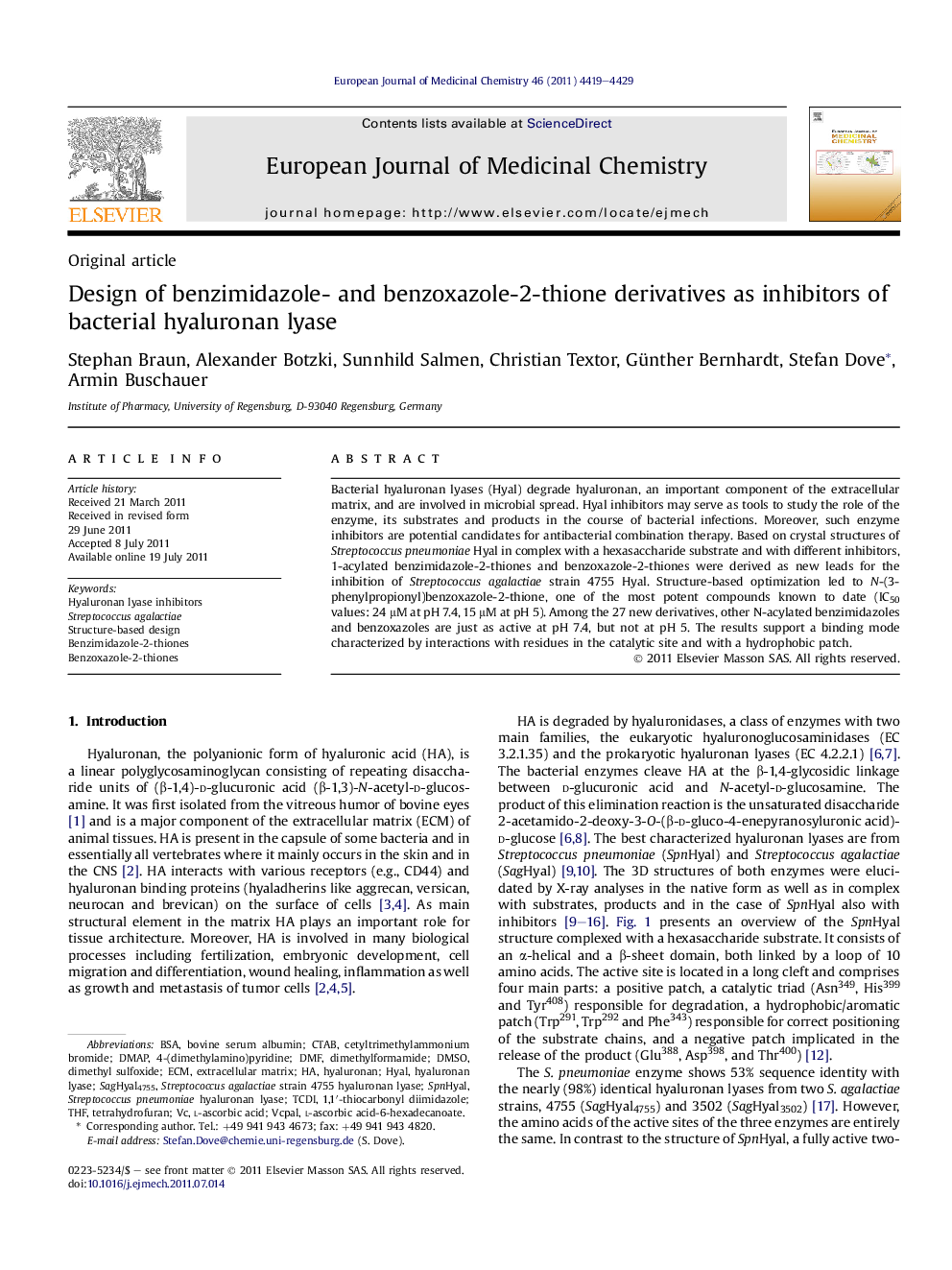| کد مقاله | کد نشریه | سال انتشار | مقاله انگلیسی | نسخه تمام متن |
|---|---|---|---|---|
| 1396209 | 1501173 | 2011 | 11 صفحه PDF | دانلود رایگان |

Bacterial hyaluronan lyases (Hyal) degrade hyaluronan, an important component of the extracellular matrix, and are involved in microbial spread. Hyal inhibitors may serve as tools to study the role of the enzyme, its substrates and products in the course of bacterial infections. Moreover, such enzyme inhibitors are potential candidates for antibacterial combination therapy. Based on crystal structures of Streptococcus pneumoniae Hyal in complex with a hexasaccharide substrate and with different inhibitors, 1-acylated benzimidazole-2-thiones and benzoxazole-2-thiones were derived as new leads for the inhibition of Streptococcus agalactiae strain 4755 Hyal. Structure-based optimization led to N-(3-phenylpropionyl)benzoxazole-2-thione, one of the most potent compounds known to date (IC50 values: 24 μM at pH 7.4, 15 μM at pH 5). Among the 27 new derivatives, other N-acylated benzimidazoles and benzoxazoles are just as active at pH 7.4, but not at pH 5. The results support a binding mode characterized by interactions with residues in the catalytic site and with a hydrophobic patch.
Figure optionsDownload as PowerPoint slideHighlights
► We derived new leads for inhibition of streptococcal hyaluronan lyases.
► Hyaluronan lyase–ligand complexes were used for structure-based design.
► As result, we analyzed 1-acylated benzimidazole-2-thiones and benzoxazole-2-thiones.
► N-(3-Phenylpropionyl)benzoxazole-2-thione was the most potent SagHyal inhibitor.
► The structure–activity relationships correspond to the suggested binding mode.
Journal: European Journal of Medicinal Chemistry - Volume 46, Issue 9, September 2011, Pages 4419–4429